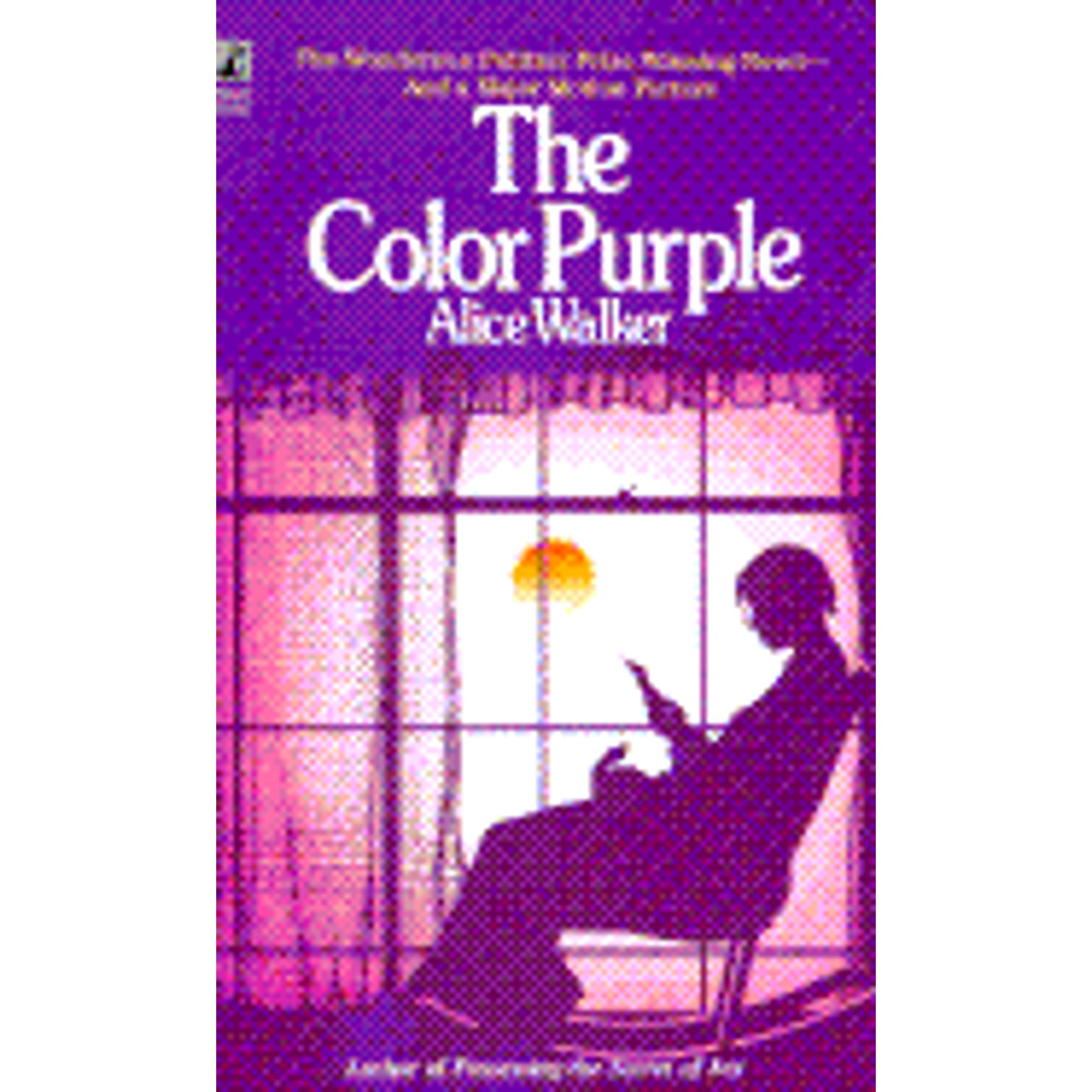The Color Purple: A Comprehensive Exploration of Alice Walker's Masterpiece

Alice Walker’s The Color Purple, a Pulitzer Prize-winning novel, transcends its historical setting and continues to resonate with readers worldwide. This in-depth exploration delves into the various aspects of this literary landmark, examining its genre, cultural impact, and enduring legacy. We will traverse the narrative’s complexities, exploring its themes, characters, and literary techniques, while also considering its numerous adaptations and its significant influence on literature and society.

The Novel’s Genre and Literary Significance
The Color Purple defies easy categorization, blending elements of various genres. While primarily a work of fiction, its epistolary structure, where the narrative unfolds through letters, adds a unique dimension. The novel’s exploration of profound themes such as racism, sexism, and abuse elevates it beyond mere entertainment. The profound emotional depth and realistic portrayal of the female characters’ struggles establish it within the realms of literary fiction and even historical fiction, given its setting in early 20th-century rural Georgia. The power of the narrative lies in its ability to simultaneously expose the brutal realities of oppression and celebrate the resilience and enduring spirit of the human heart.

The novel’s epistolary form is integral to its success. The letters, initially written by Celie to God, then between Celie and Nettie, create an intimate and immediate connection with the reader. This intimate format grants access to the innermost thoughts and feelings of the characters, allowing for a raw and unfiltered exploration of their experiences. The evolution of Celie’s letters, from anguished pleas to God to confident expressions of self-discovery, mirrors her own personal growth and empowerment throughout the story.
Themes of The Color Purple

Several powerful themes intertwine throughout The Color Purple:
-
Sisterhood and Female Solidarity: The bond between Celie and Nettie forms the emotional core of the novel. Despite years of separation and hardship, their unwavering love and support for each other serve as a powerful testament to the strength of female relationships. The novel also highlights the importance of community and the power of women to find strength and solace in each other.
-
Oppression and Resilience: The characters in The Color Purple endure various forms of oppression, including racism, sexism, and domestic violence. Celie’s experiences are particularly harrowing, yet she demonstrates incredible resilience, finding her voice and forging a path toward independence and self-acceptance. The novel’s exploration of resilience underscores the ability of the human spirit to overcome adversity and trauma.
-
Spiritual Growth and Self-Discovery: Celie’s journey of self-discovery is a central element of the novel. Through her letters, her relationships with Shug and Nettie, and her own evolving understanding of herself and the world around her, she undergoes a profound spiritual transformation. This spiritual growth is essential to her eventual liberation.
-
Love and Redemption: While the novel depicts considerable pain and suffering, it ultimately emphasizes the power of love and the possibility of redemption. The relationships between Celie and Nettie, Celie and Shug, and even the eventual reconciliation between Celie and Albert, showcase the transformative capacity of genuine connection and forgiveness.
Authorial Exploration: Alice Walker’s Life and Works
Alice Walker’s own life experiences significantly informed the creation of The Color Purple. Her upbringing in the segregated South, her experiences with racism and sexism, and her own personal journey toward self-discovery are all reflected in the novel’s themes and characters.
Understanding Walker’s writing style is crucial to understanding The Color Purple. Her use of vernacular language, particularly the Gullah dialect spoken by some characters, authentically captures the voices and experiences of her characters. Her prose often alternates between moments of deep pain and unexpected humor, creating a nuanced and multi-layered reading experience. Walker’s ability to convey complex emotions through simple, yet powerful language, is a hallmark of her distinctive style.
Alice Walker’s other works, like Meridian, By the Light of My Father’s Smile, and The Third Life of Grange Copeland, demonstrate her ongoing exploration of similar themes, including the struggles of African American women in the face of racism and oppression, the strength of family and community, and the persistent search for love and self-discovery. These works collectively showcase a consistent commitment to highlighting the voices and stories often overlooked in mainstream narratives.
Reading and Learning from The Color Purple
The Color Purple offers readers more than just a compelling narrative; it serves as a powerful tool for education and self-reflection. The novel’s exploration of complex social issues fosters critical thinking and understanding of the historical context and lasting impact of racism, sexism, and violence.
Educational Value and Life Lessons
The Color Purple holds considerable educational value due to its exploration of the following:
-
Historical Context: The novel provides insights into the lives of African American women in the early 20th century, illuminating the social and political landscape they inhabited. Understanding this historical context is vital for comprehending the characters’ motivations, struggles, and triumphs.
-
Social Issues: The Color Purple confronts readers with challenging social issues that remain relevant today. Discussing these issues through the lens of the novel encourages dialogue, empathy, and awareness.
-
Personal Growth: Celie’s journey of self-discovery serves as a powerful example of personal growth and empowerment. Readers can identify with her struggles, learn from her experiences, and find inspiration in her eventual resilience.
The novel offers valuable life lessons concerning:
-
The Importance of Relationships: The strong bonds between Celie and Nettie, and Celie and Shug, underscore the crucial role of supportive relationships in navigating life’s challenges.
-
Resilience in the Face of Adversity: Celie’s capacity to overcome tremendous adversity is a testament to the strength of the human spirit and provides inspiration for readers to face their own difficulties with courage.
-
The Power of Self-Acceptance: Celie’s journey toward self-love and self-acceptance serves as a powerful reminder of the importance of embracing one’s unique identity and finding strength within oneself.
-
Forgiveness and Redemption: The novel’s exploration of forgiveness and redemption offers hope and encourages readers to cultivate compassion and understanding.
Libraries and Archives: Preserving Literary Heritage
The Color Purple holds a prominent place in various libraries and archives worldwide. Public libraries ensure accessibility to this important text, offering it to a diverse range of readers. Digital libraries expand the novel’s reach, providing online access for a global audience. Rare book collections and archives may house first editions or annotated copies, preserving the novel’s physical history. These institutions play a vital role in making The Color Purple accessible for future generations and fostering ongoing literary scholarship.
The Color Purple’s Cultural Impact: A Lasting Legacy
The Color Purple’s influence extends far beyond the literary realm. Its cultural impact is undeniable:
-
Literary Influence: The novel has inspired numerous writers, shaping literary perspectives on race, gender, and identity. Its innovative use of the epistolary form has influenced subsequent works, highlighting the power of narrative voice and intimacy.
-
Adaptations: The Color Purple has been adapted into a successful film directed by Steven Spielberg (1985) and a Tony-winning Broadway musical. These adaptations have further broadened the novel’s reach, introducing it to a wider audience and sparking ongoing conversations about its themes and characters.
-
Awards and Recognition: The novel’s numerous accolades, including the Pulitzer Prize and the National Book Award, establish its literary merit and significance. These awards underscore its impact on American literature and its lasting significance within literary history.
-
Communities: The novel has fostered community among readers, scholars, and activists who engage in discussions and analyses of its multifaceted themes. The novel’s enduring popularity and relevance sustain ongoing conversations concerning social justice and personal empowerment.
In conclusion, The Color Purple remains a powerful and relevant work of literature. Its exploration of universal themes, its innovative literary techniques, and its lasting cultural impact ensure its continued relevance for future generations. The novel’s exploration of resilience, love, and redemption offers enduring lessons, reminding us of the enduring strength of the human spirit and the possibility of hope amidst adversity.